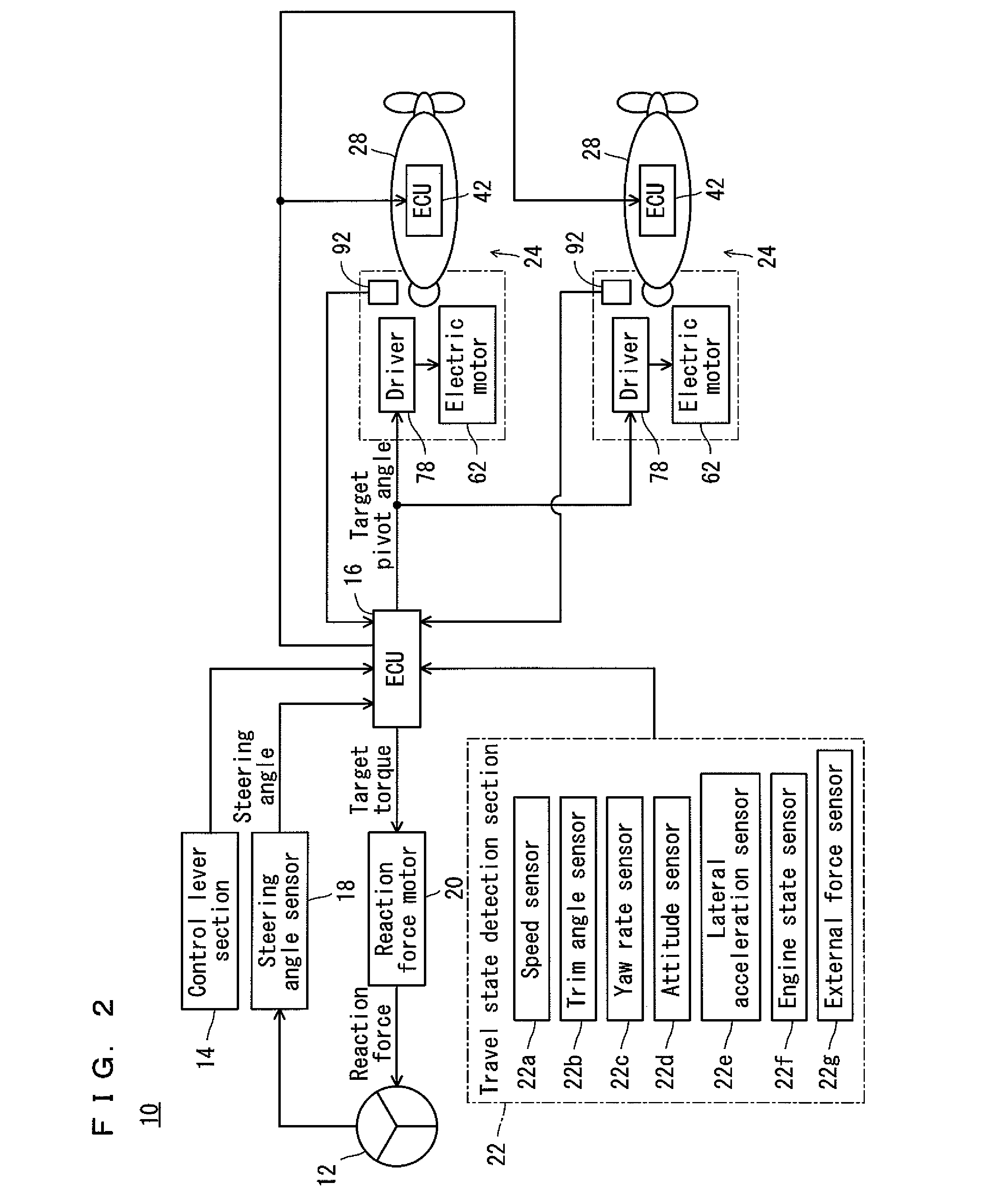Boat propelling system
a propelling system and propeller technology, applied in the field of boat propelling systems, can solve problems such as abnormal steering of the propelling system main body
- Summary
- Abstract
- Description
- Claims
- Application Information
AI Technical Summary
Benefits of technology
Problems solved by technology
Method used
Image
Examples
Embodiment Construction
[0038]Hereinafter, preferred embodiments of the present invention will be described with reference to the drawings.
[0039]The description will cover an example in which a boat propelling system 10 according to a preferred embodiment of the present invention is installed in a boat 1. A symbol “FWD” which appears in some of the drawings indicates a forward travelling direction of the boat 1.
[0040]Referring also to FIG. 2, the boat 1 includes a hull 2 and a boat propelling system 10 installed on the hull 2.
[0041]The boat propelling system 10 includes a steering section 12 arranged inside the hull 2 to steer outboard engine main bodies 28 (to be described later); a control lever section 14 arranged near the steering section 12 to perform a forward-moving or rearward-moving operation of the hull 2; an ECU (Electronic Control Unit) 16 arranged and programmed to control operations of the boat propelling system 10; a steering angle sensor 18 arranged to detect a steering angle of a rotating ...
PUM
 Login to View More
Login to View More Abstract
Description
Claims
Application Information
 Login to View More
Login to View More - R&D
- Intellectual Property
- Life Sciences
- Materials
- Tech Scout
- Unparalleled Data Quality
- Higher Quality Content
- 60% Fewer Hallucinations
Browse by: Latest US Patents, China's latest patents, Technical Efficacy Thesaurus, Application Domain, Technology Topic, Popular Technical Reports.
© 2025 PatSnap. All rights reserved.Legal|Privacy policy|Modern Slavery Act Transparency Statement|Sitemap|About US| Contact US: help@patsnap.com



